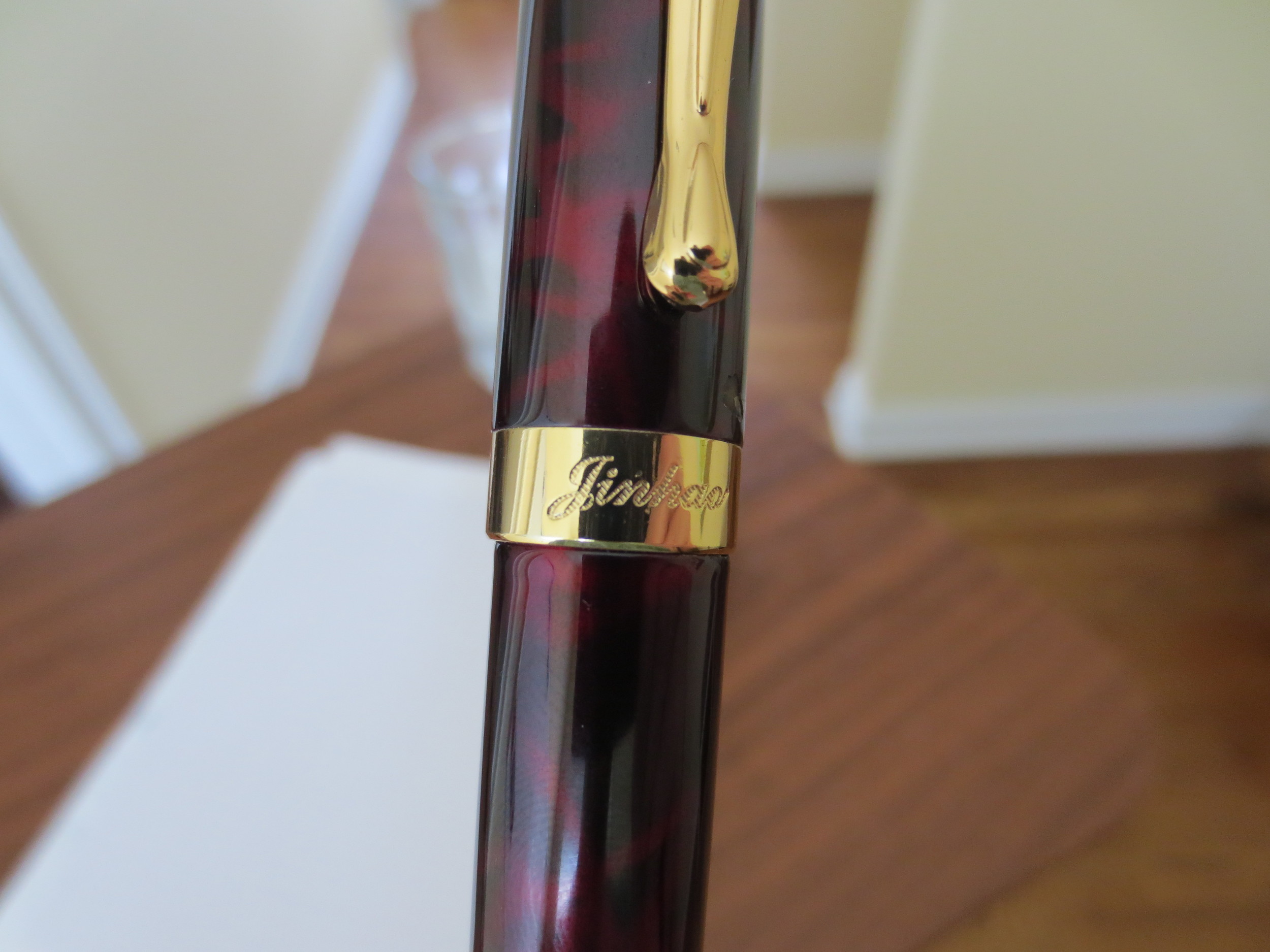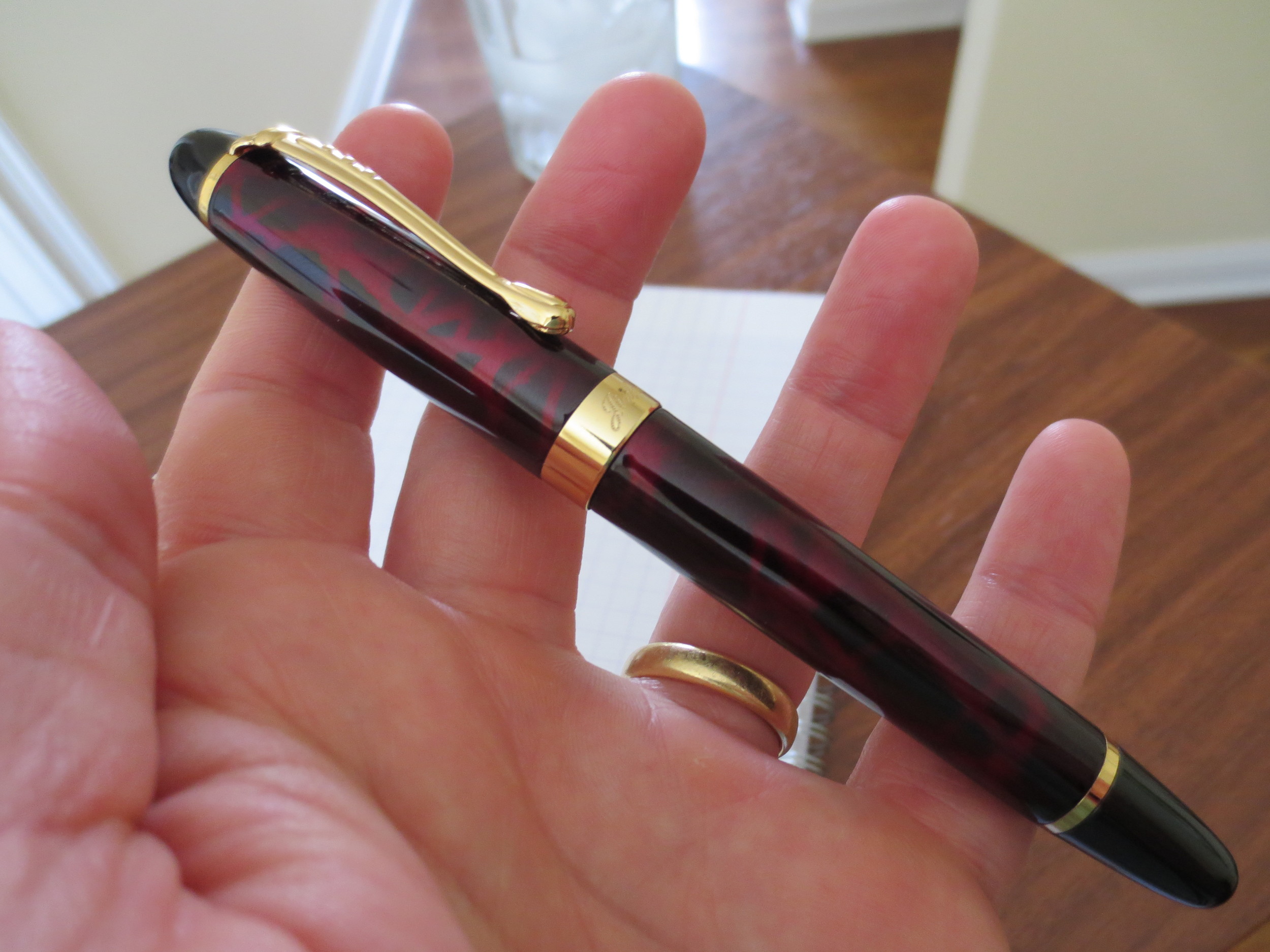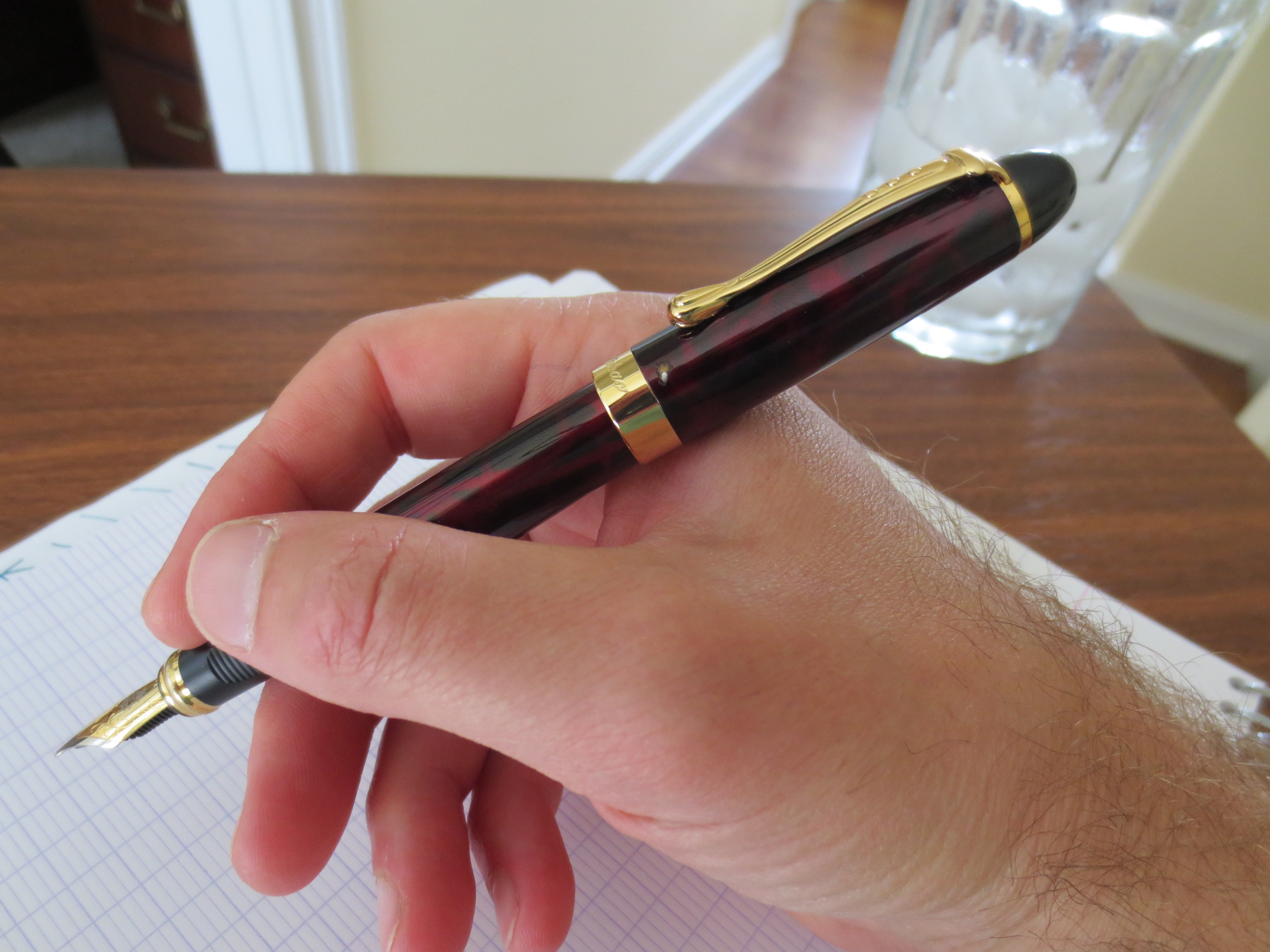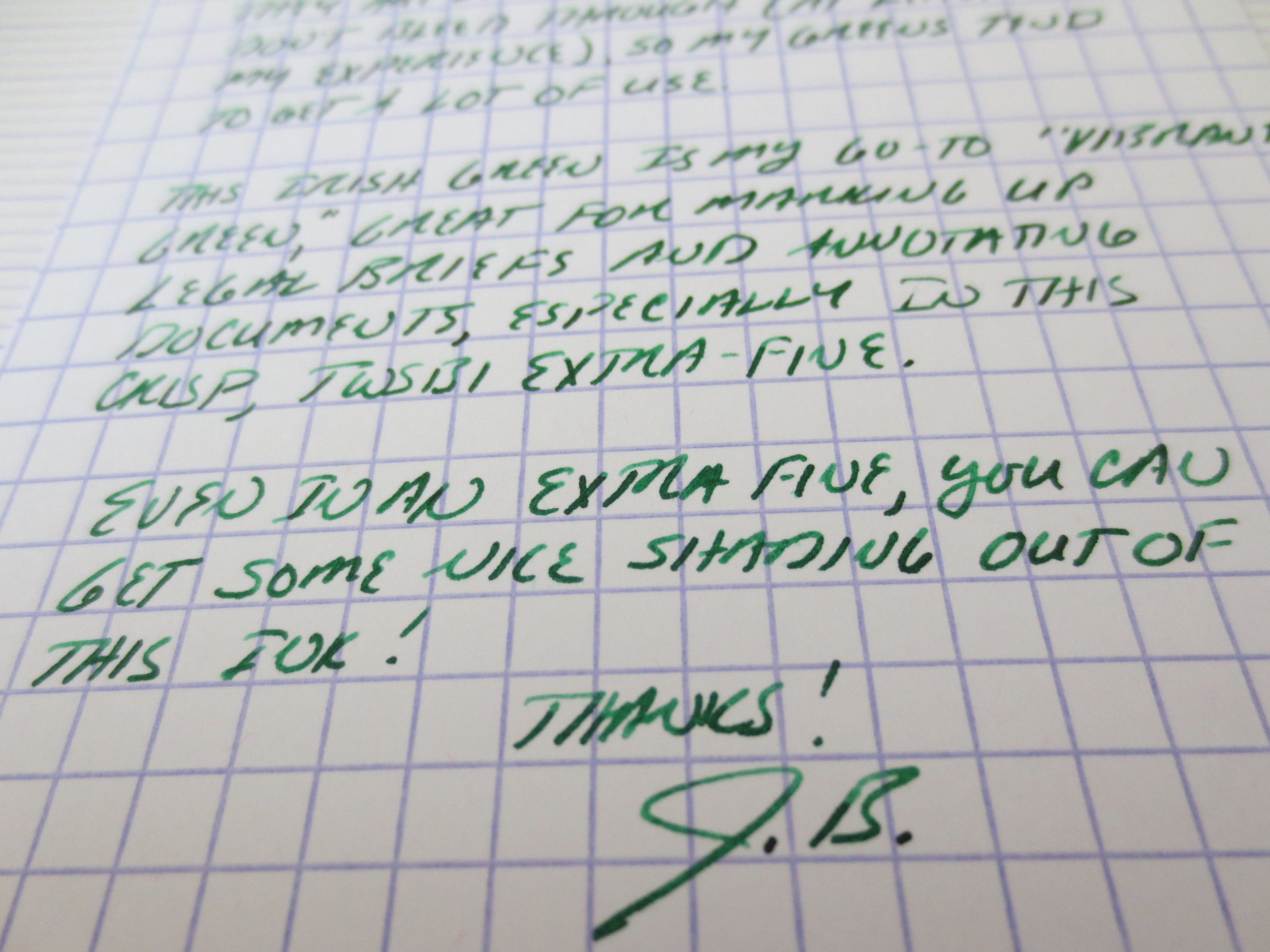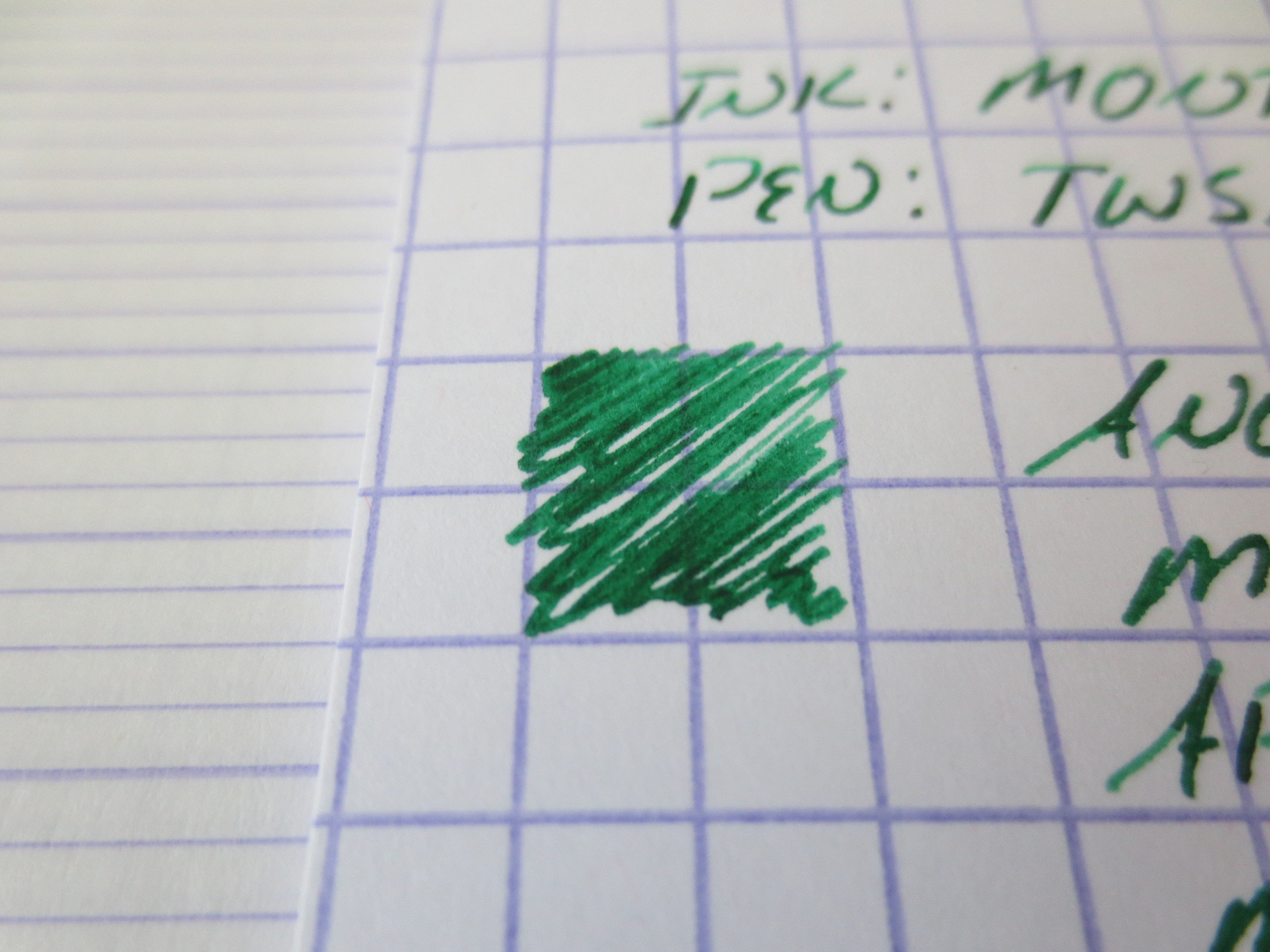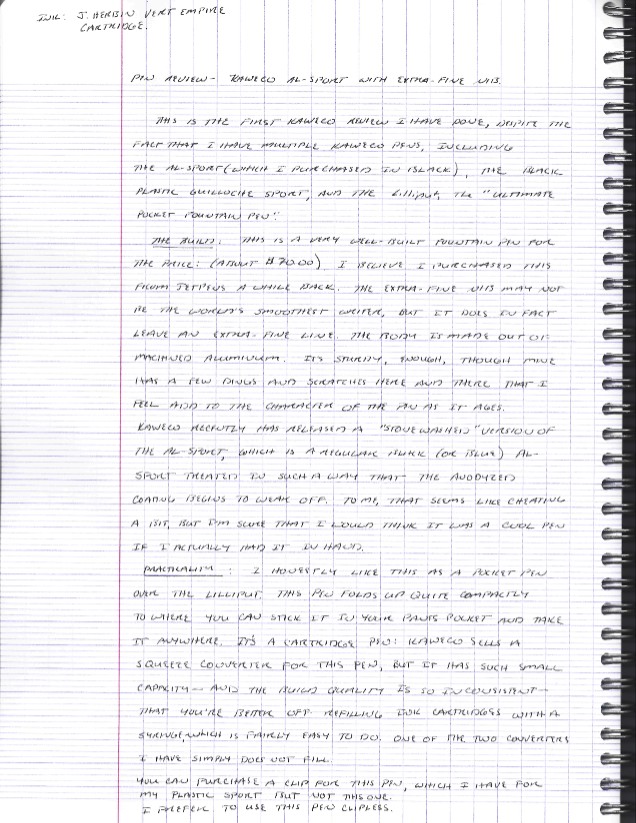I mentioned to a friend of mine that I was considering purchasing one of the full size Kawecos, and he offered to loan me two from his collection to test out for a day or so: the Kaweco Allrounder and the Kaweco Elite. I popped in a couple of Kaweco ink cartridges I had been meaning to try, and spent a long morning trying to decide whether these two pens were the pens for me. After spending the morning with the Allrounder, I'm not 100% sold on Kaweco's full size pens as opposed to the Sport line. That said, I'm sufficiently intrigued by the looks of the Kaweco Dia2 that I'm going to wait until I have a chance to try that pen before making a final decision whether or not to take the plunge.
The Kaweco Allrounder is a gorgeous pen. It's also solidly constructed from machined aluminum, with stainless trim. I'm a sucker for red pens, so this one had me from the get-go.
Build Quality
The Allrounder is an aluminum pen, much like the AL Sport, though this pen has a round barrel (as the name reflects). The pen is very well machined and constructed. Like the AL Sport, I imagine that it will collect some dings and scrapes with use and age, but as with the Sport that will add to the pen's character. Despite being a metal pen, it's light (one of the virtues of aluminum as a material). The cap screws on firmly, with no jiggling or rattling, and the clip is secure. Typical high quality German construction from Kaweco!
You can get a sense of how nice looking and well constructed this pen is. Note the nib, which I would venture is disproportionately small to the size of the pen.
The Nib
The nib is where this pen may have lost me. Much has been made of the size of the nib: it arguably looks too small for the pen. Kaweco has used the same great nib from the Sport line, but on this larger pen, it seems a bit undersized. Also, this particular nib was a double broad. I'm not one to use a double broad for general day-to-day writing, unless it's a stub. However, I can still appreciate a smooth, generously flowing B or BB nib when I use one. This nib gave me some trouble because the ink flow was inconsistent and required me to use heavy pressure in order for the pen not to skip. If I do end up purchasing this pen (or the Dia2, which also uses this nib), I think I will opt for the fine or the medium.
A Note on the Ink
This review was written with a cartridge of Kaweco's "Palm Green" Ink. I have to say, I've been extremely impressed with the quality of Kaweco's ink offerings. The Green is a vibrant green color that is well-behaved and exhibits great shading. It flushed right out of the Allrounder with one squirt of a bulb syringe when it was time to clean the pen up and return it to my friend. Once I've worked my way through some of my ink horde over the summer, I may pick up a bottle or two of Kaweco's colors at a pen show, to save on shipping and maybe secure a discount off the relatively steep price of the ink ($14 for 30ml!?).
I did a quick comparison with two other green inks I have loaded up: Franklin Christoph's Olde Emerald and Montblanc's Irish Green. The Kaweco ink is pretty close to the Montblanc; I would venture to say slightly brighter.
A close-up shot of Kaweco's vibrant Palm Green ink exhibiting gorgeous shading in a double broad nib.
My Verdict
I'm undecided right now. I LOVE the way this pen looks. It has everything I typically look for in a good mid-range fountain pen: good materials, tight tolerances and excellent quality control on the pen's body. Plus it's red! Kaweco's double broad nib, however, left me wanting more. I'm sure with a little tweaking, it could be turned into a fairly good writer, but as I get deeper into this hobby, and at this price point, I'm not so eager to spend time doing nib work or sending it off to be tweaked. From reviews I have read elsewhere, I suspect the problem may lie with the small feeds used in these pens, which seem to have a hard time keeping up with the ink flow on a broader nib if you write fairly quickly, like I do. That said, I'd love to try this pen again with Kaweco's medium nib, which I think hits the sweet spot for me in terms of line width and ink flow.
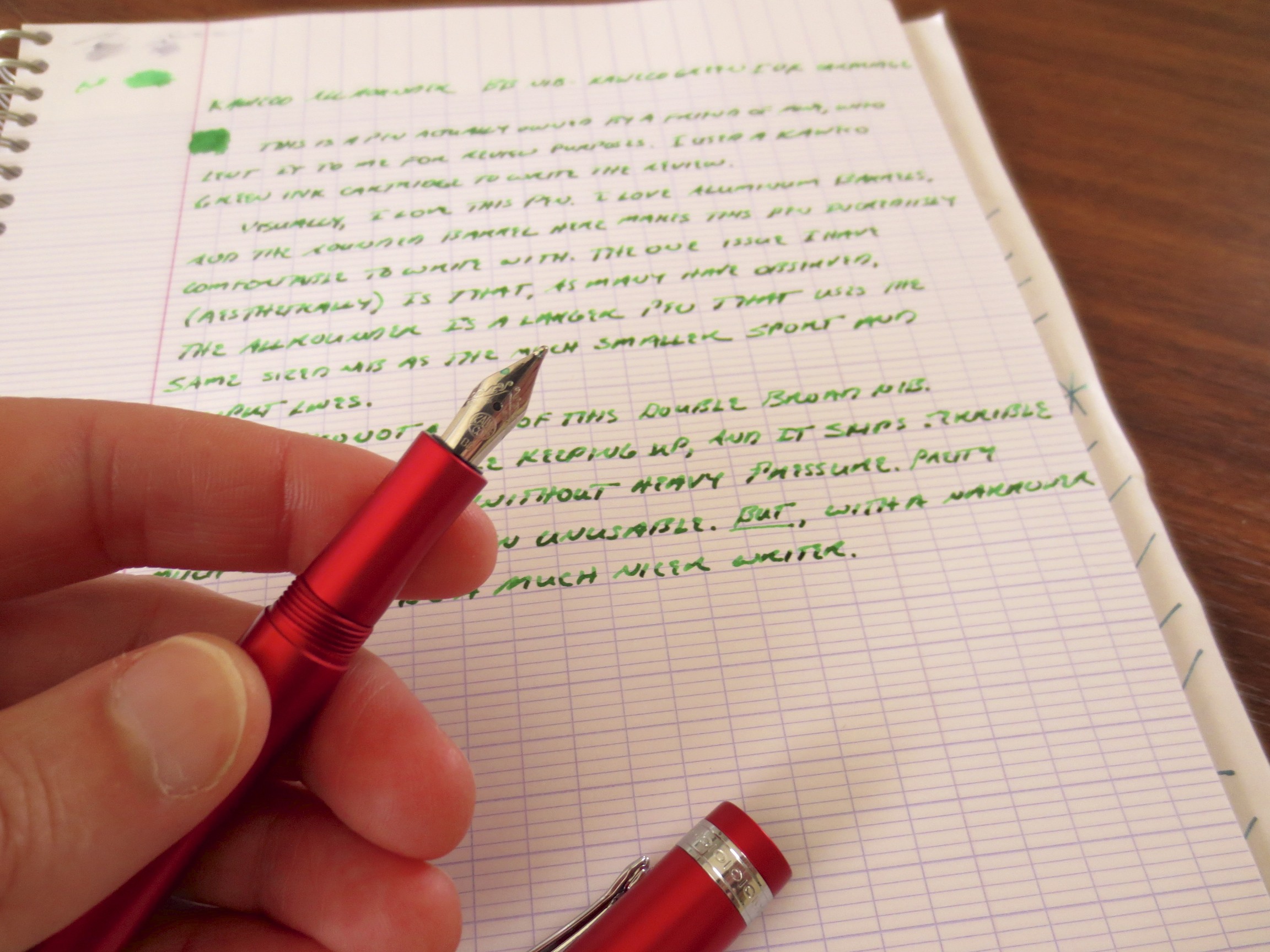
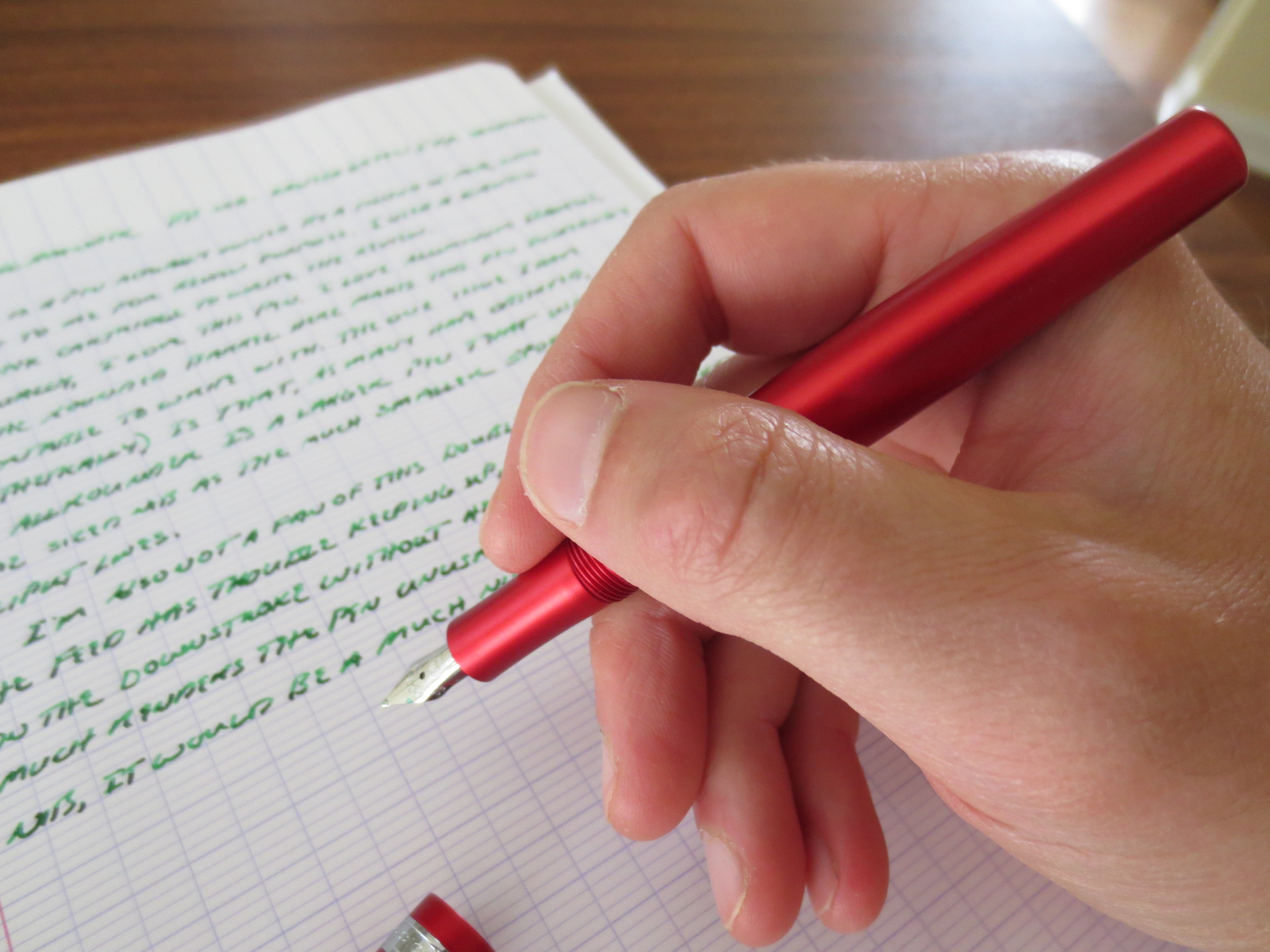

Handwritten review. As you can see at the bottom, I loaded the remainder of the Palm Green cartridge into my Kaweco Sport with a medium nib. The flow was much more consistent than the BB.

